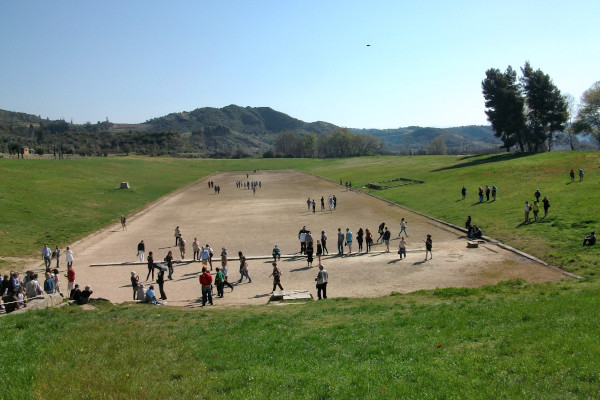Just outside the northeast corner of the sanctuary's main yard is located the ancient stadium of Olympia. In this stadium were held the ancient Olympic Games but also the Irea which were women's games in honor of the goddess Hera.
Around the 6th century BC. the games were taking place at another point, while the current stadium acquired its current form during the 5th century BC.. This evolvement was led by the constant increase of the fame of the games which were gathering more athletes and spectators through the years.
How was the Stadium of Olympia in Antiquity?
The stadium was expanded once again during the 4th century BC. At that time, its track had a length of 212.54 meters and a width of 30 meters. Today the visitor can distinguish the stone valves where the distance between them is equal to this of a modern Olympic stadium (or 192.27 meters).
There are also some remains of the platform of the judges that was located on the southern part and the altar of Dimitra where the priestess stood. The priestess by the altar of the goddess was the only woman who could watch the Olympic Games.
How much was the capacity of the Ancient Olympia Stadium?
According to estimations, the stadium could accommodate around 45,000 spectators. There were few stone seats for officials, while some sources argue that wooden seats were added in Roman times.
Around the stadium there was a pipeline that helped to remove rainwater and at the end of the 3rd century BC. The monumental entrance called Krypti was built and consisted of a 32-meter marble roof gallery.
The stadium was discovered by the first German excavations that took place in the sanctuary. While this excavation was continued again by German archaeologists in the period 1952-1966.
Historical moment at the 2004 Olympic Games
Undoubtedly the most significant moment in the modern history of the stadium was on the 18th of August 2004 when after 1611 years it hosted the shooting event during the modern Olympic Games in Athens.
